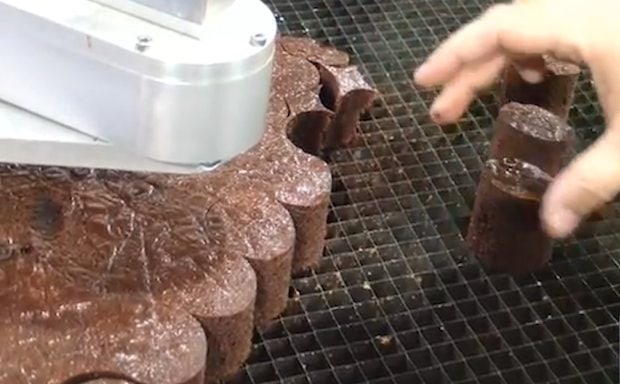
Pop quiz! Can you think of a materials science application for these terms: thermal processing, dielectric properties, electrostatic and nonelectrostatic coating, nanotechnology, nondestructive testing, minerals, Fourier transform infrared spectroscopy, and corrosion?
It turns out food scientists use these terms, too. In fact, our world and the food science world overlap significantly. At Ohio State University, for example, assistant professor Farnaz Maleky studies the materials science of food and nanoengineering of food systems.
Thus, it is fun to see “our” tools adapted and introduced into the food science sphere. In the video above, for example, Machine Design’s editor-in-chief, Leland Teschler, interviews Skip Reynolds of KMT Waterjet about adapting waterjet cutting technology to the food industry. Waterjet cutting has long been used to cut metals, stone, glass, composites, and ceramics. (Interestingly, Reynolds focuses on the food and aerospace industries. See the engineeringTV.com website for more videos from the MD team.)
Waterjet technology offers some significant improvements for food processing. In the interview, Reynolds says that waterjet cutting causes less cell damage to produce. They found, for example, that romaine lettuce cut by waterjets had a shelf life four days longer than lettuce cut the traditional way, which is “huge in the produce industry,” according to Reynolds.
In the interview, Reynolds also notes that food can be processed two to three times faster, with a produce throughput of 5,000–8,000 pounds per minute. That’s a lot of lettuce.
The technology is not just for produce, of course. The video demonstrates cutting of petit-four cakes. The four-minute video is fun to watch, rich on technical details, and not fattening.
Author
Eileen De Guire
CTT Categories
- Manufacturing


